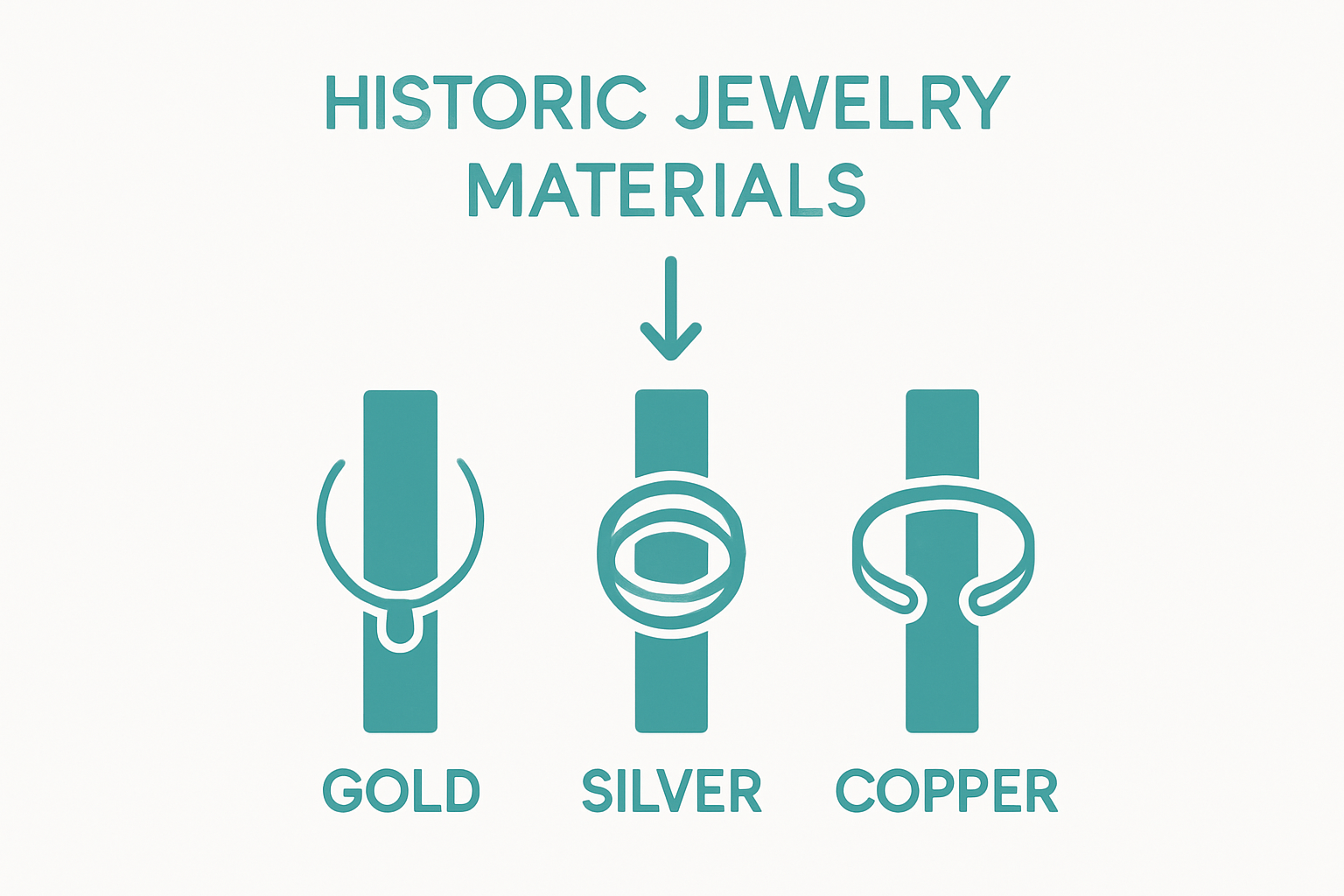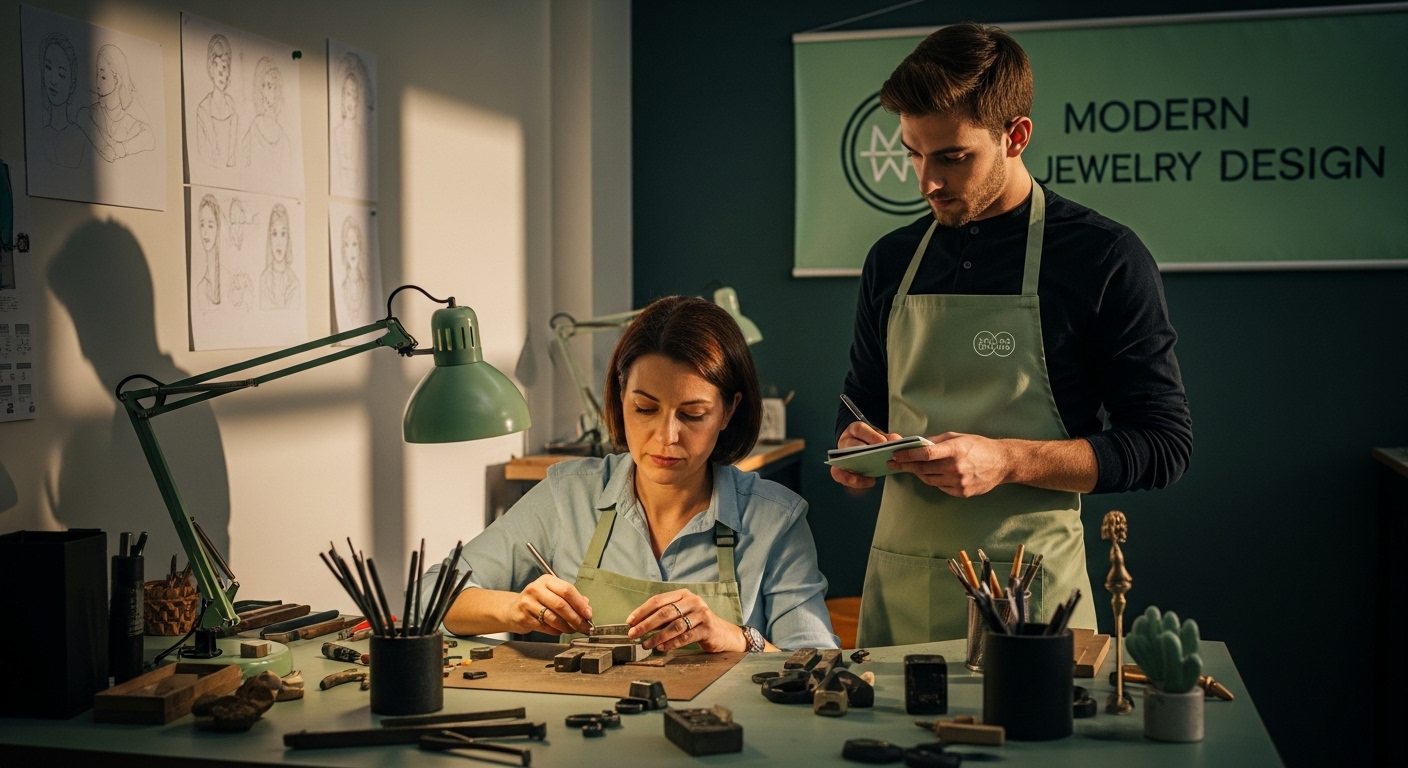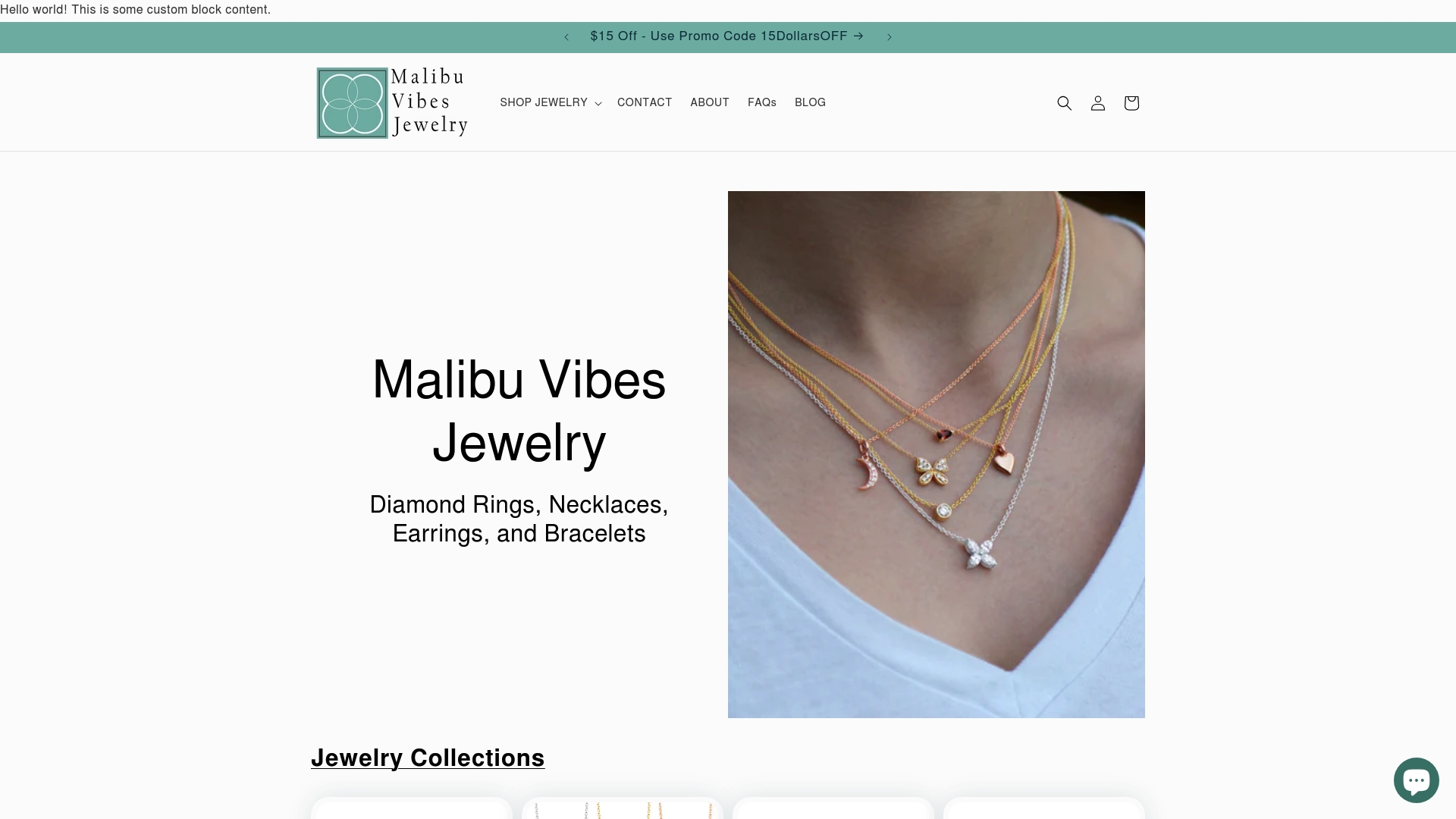Jewelry has been around for over 100,000 years, shaping how people express identity and beliefs in every corner of the world. Most expect shiny stones and precious metals to be about beauty or status. That idea barely scratches the surface—because each piece of jewelry is part of a hidden language, telling stories and carrying meanings that stretch across centuries and cultures.
Table of Contents
- The Origins Of Jewelry: A Cultural Journey
- Materials And Techniques: Evolution Through Eras
- Symbolism And Meaning: Jewelry Beyond Adornment
- The Influence Of Fashion Trends On Jewelry Design
- Modern-Day Jewelry Design: Merging Tradition With Innovation
Quick Summary
| Takeaway | Explanation |
|---|---|
| Jewelry is a universal cultural language. | Jewelry transcends geographical and temporal boundaries, conveying identity and stories across cultures. |
| Ancient civilizations used jewelry for symbolism. | Jewelry served significant roles in social status, spiritual beliefs, and as communication tools in ancient societies. |
| Materials and techniques evolved over time. | Jewelry design reflects advancements in craftsmanship and materials, from prehistoric ornaments to modern techniques. |
| Fashion trends significantly influence jewelry design. | Shifts in fashion styles have historically transformed the aesthetics and materials used in jewelry making. |
| Modern design emphasizes sustainability and ethics. | Today’s jewelry creation increasingly focuses on ethical sourcing and environmentally friendly practices, merging tradition with innovation. |
The Origins of Jewelry: A Cultural Journey
The history of jewelry design represents a profound narrative of human expression, symbolizing far more than mere adornment across diverse civilizations. Jewelry emerges as a universal language of cultural communication, transcending geographical boundaries and temporal constraints.
Prehistoric Beginnings
Archeological evidence reveals that jewelry’s origins stretch back approximately 100,000 years, with early humans crafting intricate ornaments from naturally available materials. Research from the National Museum of Natural History demonstrates that prehistoric societies used shells, animal teeth, bones, and colorful stones not just for aesthetic purposes, but as powerful social and spiritual symbols.
Key characteristics of early jewelry design included:
- Symbolic representation of social status
- Spiritual and ritualistic significance
- Communication of tribal affiliations
- Personal protection and talismanic purposes
Cultural Significance and Symbolism
Ancient civilizations imbued jewelry with profound meanings beyond decorative value. In Egypt, jewelry represented divine connections and social hierarchy, with intricate gold and gemstone pieces signaling royal lineage. Mesopotamian cultures used jewelry as currency and diplomatic gifts, establishing complex social networks.
Learn more about our historical jewelry collections that draw inspiration from these rich cultural traditions.
The evolution of jewelry design reflects humanity’s fundamental desire to communicate identity, commemorate significant moments, and express individual creativity. From prehistoric bone ornaments to contemporary handcrafted pieces, jewelry continues to serve as a powerful medium of personal and cultural storytelling.
The following table summarizes the major historical eras of jewelry design, highlighting their key materials, techniques, and distinctive symbolic meanings.
| Era | Typical Materials | Notable Techniques | Common Symbolism |
|---|---|---|---|
| Prehistoric | Shells, bones, stones | Stringing, carving | Social status, spiritual beliefs |
| Ancient Egypt | Gold, gemstones, faience | Goldsmithing, inlay, granulation | Divine connections, social hierarchy |
| Mesopotamia | Gold, silver, lapis lazuli | Hammering, casting, filigree | Currency, diplomacy, social roles |
| Renaissance | Gold, enamel, colored gems | Advanced faceting, enameling | Artistry, wealth, individual creativity |
| Modern/Contemporary | Gold, silver, platinum, alloys | CAD, 3D printing, mixed media | Identity, innovation, sustainability |
Materials and Techniques: Evolution Through Eras
The history of jewelry design is intrinsically linked to the materials and crafting techniques available during different historical periods. Technological advancements and cultural exchanges dramatically transformed jewelry making, creating complex narratives of artistic innovation and human creativity.
Metals and Metalworking Techniques
Metal selection and manipulation represent a critical aspect of jewelry design evolution. Early metalworking emerged around 6000 BCE, with copper being the first extensively utilized metal.
 Research from the Victoria and Albert Museum highlights the progression from simple copper techniques to sophisticated goldsmithing practices across civilizations.
Research from the Victoria and Albert Museum highlights the progression from simple copper techniques to sophisticated goldsmithing practices across civilizations.
Significant metalworking techniques included:
- Hammering and annealing metals
- Developing complex casting methods
- Introducing granulation and filigree work
- Creating intricate alloy compositions
Gemstone Cutting and Setting Innovations
Gemstone manipulation represents another transformative element in jewelry design. Early gem processing involved simple polishing techniques, but technological innovations enabled increasingly sophisticated cutting and setting methods. The Renaissance period marked a significant turning point, with European jewelers developing advanced faceting techniques that enhanced gemstone brilliance and visual appeal.
Explore our guide on historical jewelry styles to understand how these techniques influenced design aesthetics.
The continuous evolution of materials and techniques reflects humanity’s persistent quest for beauty, technological mastery, and cultural expression through personal adornment. From rudimentary stone and metal assemblies to precision-engineered contemporary pieces, jewelry design remains a testament to human creativity and technical skill.
Symbolism and Meaning: Jewelry Beyond Adornment
Jewelry transcends aesthetic appeal, serving as a profound medium of communication, personal expression, and cultural significance. Every piece tells a story, embedding layers of meaning that extend far beyond its physical beauty and material composition.
Cultural and Social Signifiers
Research from the Encyclopaedia Britannica reveals that jewelry has historically functioned as a complex social language. Different cultures developed intricate systems of symbolic representation through ornamental pieces, communicating critical information about an individual’s status, wealth, spiritual beliefs, and social role.
Key cultural significance of jewelry included:
- Marking social hierarchies and achievements
- Representing spiritual and religious affiliations
- Indicating marital status and familial connections
- Serving as diplomatic and economic exchanges
Emotional and Personal Symbolism
Beyond societal markers, jewelry carries deep personal emotional resonance. Wedding rings, inheritance pieces, and commemorative jewelry represent profound human experiences of love, memory, and connection. These objects become tangible repositories of personal narratives, carrying emotional weight that transcends their physical form.
This table outlines the primary functions and meanings assigned to jewelry throughout history, clarifying their cultural and personal significance.
| Function | Cultural/Social Purpose | Example(s) |
|---|---|---|
| Social Status Identification | Indicate rank, power, wealth | Royal crowns, ornate necklaces |
| Spiritual/Religious Symbol | Express beliefs, divine protection | Amulets, religious pendants |
| Commemorating Milestones | Mark life events or achievements | Wedding rings, commemoration pieces |
| Personal Expression | Showcase individuality, creativity | Custom rings, statement jewelry |
| Economic/Diplomatic Exchange | Trade, gift-giving between groups | Ornate gifts, currency-like jewelry |
| Familial or Marital Status | Signify marital or family bonds | Engagement rings, heirloom pieces |
Explore our guide to understanding gemstone meanings and discover how specific stones can embody powerful personal symbolism.
Ultimately, jewelry represents a universal human impulse to transform personal stories into wearable art. From ancient talismans to contemporary statement pieces, these ornaments continue to serve as powerful conduits of individual and collective meaning, bridging personal identity with broader cultural narratives.
The Influence of Fashion Trends on Jewelry Design
Fashion and jewelry design share a dynamic, interconnected relationship, constantly evolving through mutual inspiration and cultural shifts. Jewelry serves not merely as an accessory but as a powerful reflection of societal aesthetics, technological capabilities, and changing artistic sensibilities.
Historical Fashion Movements and Design Transformation
Research from the Museum of Fine Arts demonstrates how fashion movements dramatically reshaped jewelry design across different eras. The Art Nouveau period, for instance, introduced organic, fluid lines that challenged traditional geometric jewelry forms, while the Art Deco movement embraced bold, symmetrical designs reflecting modernist architectural influences.
Significant fashion trend impacts on jewelry included:
- Shifting from intricate Victorian designs to streamlined geometric styles
- Introducing new material experiments
- Reflecting social movements and cultural changes
- Democratizing jewelry design through mass production techniques
Contemporary Influences and Global Inspiration
Modern jewelry design draws inspiration from diverse global fashion trends, technological innovations, and cross-cultural exchanges. Designers increasingly blend traditional craftsmanship with contemporary aesthetic sensibilities, creating pieces that transcend geographical and cultural boundaries.
Explore our guide on fashion jewelry styles to understand how contemporary trends shape modern jewelry design.
Ultimately, jewelry design represents a continuous dialogue between artistic innovation, cultural expression, and personal identity. Each piece tells a story not just of its aesthetic appeal, but of the complex social and creative landscape from which it emerged.
Modern-Day Jewelry Design: Merging Tradition with Innovation
Contemporary jewelry design represents a dynamic intersection of heritage craftsmanship and cutting-edge technological innovation, challenging traditional boundaries and redefining artistic expression through personal adornment.
Technological Integration in Design
Research from the National Jeweler highlights how modern designers leverage advanced technologies to transform jewelry creation. Computer-aided design (CAD), 3D printing, and digital modeling have revolutionized the design process, enabling unprecedented precision and complex geometric configurations that were previously impossible.
Key technological innovations in jewelry design include:
- Advanced digital modeling techniques
- Precision 3D printing capabilities
- Laser cutting and intricate fabrication methods
- Virtual design prototyping platforms
Ethical and Sustainable Design Approaches
Modern jewelry design increasingly emphasizes ethical sourcing, sustainability, and social responsibility. Designers are reimagining production methods, incorporating recycled materials, conflict-free gemstones, and environmentally conscious manufacturing processes that respect both artistic integrity and global ecological considerations.
Discover our custom jewelry personalization options to explore how contemporary design meets individual expression.
Ultimately, modern jewelry design transcends mere aesthetic creation, representing a profound dialogue between technological potential, cultural heritage, and individual storytelling. Each piece becomes a testament to human creativity, connecting historical craftsmanship with forward-thinking innovation.

Experience the Legacy of Jewelry Design with Malibu Vibes Jewelry
The rich history of jewelry design reveals that every piece you wear tells a story, not just of personal style, but of cultural identity, craftsmanship, and deep emotional meaning. If you appreciate how jewelry once symbolized status, spirituality, and artistry, you likely value pieces that embody both tradition and innovation. Yet, finding jewelry that truly connects past artistry with modern craftsmanship can be challenging for those who seek more than just accessories.
Explore our Solid Gold Necklaces collection, crafted from premium 14k gold and inspired by timeless design principles.

Bring the story full circle with jewelry that merges heritage, quality, and modern beauty. Discover more iconic styles at Malibu Vibes Jewelry and celebrate your own journey with handcrafted pieces made to last. Shop now for unique designs and exclusive offers—because your jewelry should stand for something as remarkable as you.
Frequently Asked Questions
What are the earliest known origins of jewelry design?
Jewelry design dates back approximately 100,000 years, with early humans creating ornaments from natural materials like shells, bones, and stones, primarily for social and spiritual symbols.
How has the symbolism of jewelry evolved throughout history?
Historically, jewelry has served as a complex social language, indicating social status, spiritual beliefs, and personal milestones, evolving from basic adornments to intricate representations of cultural identity.
What are some key materials used in ancient jewelry making?
Ancient jewelry was primarily made from natural materials such as shells and bones, and later, metals like copper and gold, which were manipulated using various metalworking techniques over the centuries.
How do modern trends influence contemporary jewelry design?
Modern jewelry design is influenced by global fashion trends, technological advancements, and cultural exchanges, resulting in an integration of traditional craftsmanship with innovative techniques and materials.
Recommended
- What is Statement Jewelry: Understanding Its Impact and Style – Malibu Vibes Jewelry
- Understanding the Origin of Hoop Earrings – Malibu Vibes Jewelry
- Understanding Why Invest in Gold Jewelry: A Comprehensive Guide – Malibu Vibes Jewelry
- What is Fine Jewelry? Understanding Luxury and Craftsmanship – Malibu Vibes Jewelry



